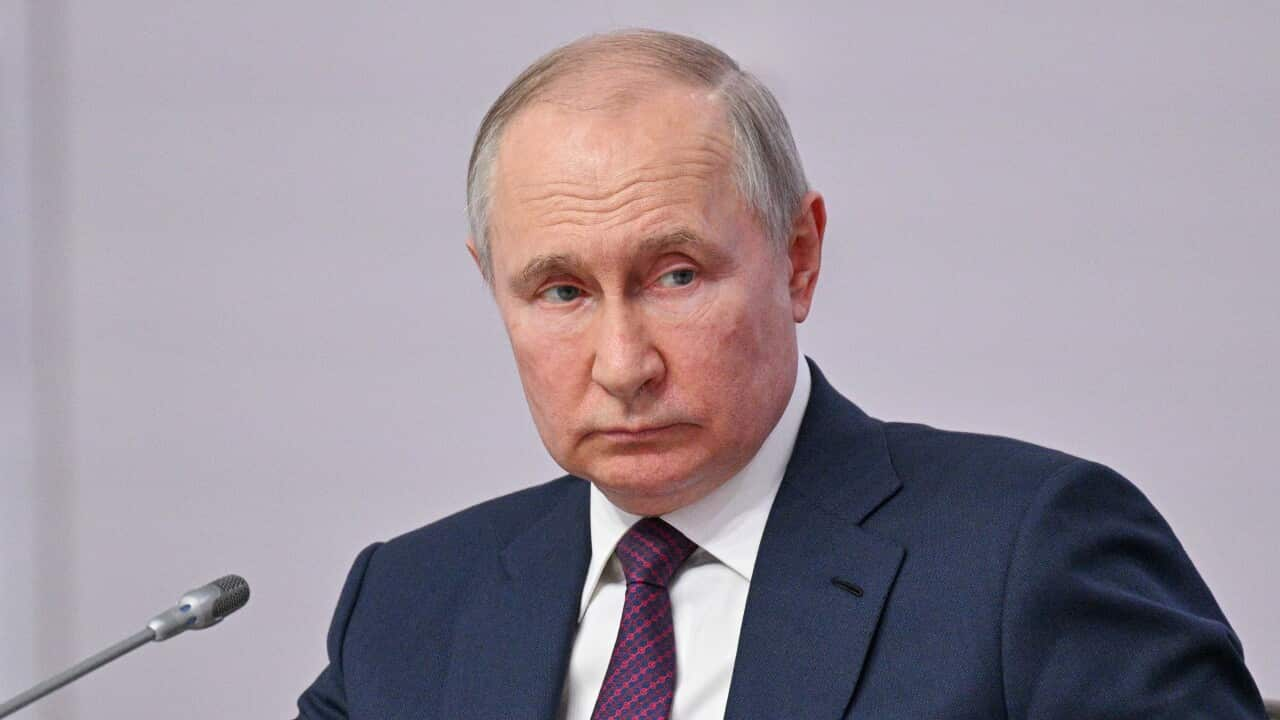At least 10 people have been killed in a Russian missile strike on the central Ukrainian city of Kryvyi Rih.
"As of (2000 AEST) 10 people have been killed," Kryvyi Rih mayor Oleksandr Vilkul said in a Telegram post, adding that another person was under the rubble and a further 28 were injured.
Mr Vilkul said the rescue operation was "ongoing".
Ukrainian officials had said earlier on Tuesday that six people had been killed and many more were trapped under the rubble of a five-storey apartment building.
Ukraine's President Volodymyr Zelenskyy who was born in Kryvyi Rih, condemned the attack on his hometown.
"Russian killers continue their war against residential buildings, ordinary cities and people," he said on Telegram messaging app.
During the early hours of Tuesday, air raid sirens blared across the whole of Ukraine, with Kyiv's military officials saying air defence forces destroyed all Russian missiles targeting the Ukrainian capital.
Earlier, Ukraine's top military command said air forces destroyed 10 out of 14 cruise missiles Russia launched on Ukraine and one of the four Iranian-made drones.
It was not immediately clear how many missiles hit Kryvyi Rih and where the Russia-launched drones struck their targets.
There was no immediate comment from Russia about the reported strikes. Both Russia and Ukraine deny targeting civilians in the war which Russia launched on its neighbour nearly 16 months ago.
The mayor of the city of Kharkiv in Ukraine's east said on his Telegram channel that Russian drones hit civilian infrastructure there, striking a warehouse and a utility firm's building. There was no immediate information about casualties.
Ukraine's long-awaited counteroffensive is underway
Ukraine said on Monday its troops had recaptured seven villages from Russian forces along an approximately 100-kilometre front in the southeast since launching its long-anticipated counteroffensive last week.

Ukrainian soldiers from the 35th Separate Marine Brigade say they recaptured the village of Storozheve in the eastern Donetsk region. Source: Supplied / Mihail Ostrogradski
On Monday, soldiers were seen in a video holding the Ukrainian flag in the village of Storozheve, along the Mokri Yaly river which flows northward out of Russian-held territory. Reuters confirmed the location.
A day earlier Kyiv said its forces heading south had liberated three other nearby villages along the Mokri Yaly: Blahodatne, Neskuchne and Makarivka.
Deputy Defence Minister Hanna Maliar said in a Telegram post late on Monday that Ukrainian forces had also recaptured Levadne and Novodarivka, around 10 kilometre west of the Mokri Yaly, as well as Lobkove, southeast of the city of Zaporizhzhia.
Ms Maliar said troops had advanced a total of 6.5 kilometres. "The area of the territory taken under control was 90 square kilometres," she said. Ms Maliar added that the seven settlements were taken over the past week, without giving details of precisely when.
It was not possible to verify all the battlefield claims.
How significant is the territory retaken by Ukraine?
The push is already Ukraine's most rapid advance for seven months, though still short of a major breakthrough, with Russia believed to have a strong line of fortifications further south.
The furthest advance claimed by Kyiv leaves its forces still some 90 kilometres from the Azov Sea coast and the prize of cutting Russia's "land bridge" to Crimea, the peninsula Moscow seized from Ukraine in 2014.
A Ukrainian defence spokesman said Russia had blown up a dam on the Mokri Yaly to make it harder for Ukrainian forces to thrust farther south. That came less than a week after a huge dam was destroyed on the much larger Dnipro River, causing a humanitarian disaster in a swathe of the south.
Kyiv has also launched assaults at other locations along the long front line, probing for Russian weaknesses, though it has given few details so far.

Rescue workers help locals to get home in the village of Afanasiivka, Mykolaiv region, Ukraine, 12 June 2023, amid floods following the collapse of the Nova Khakovka dam. Source: AAP / Stas Kozliuk
How heavy has fighting been so far?
Ukraine's armed forces said they had engaged in two dozen heavy battles in the previous 24 hours on the eastern front, near the town of Bakhmut, further south near Avdiivka and Maryinka, and further north near Bilohorivka.
They have not been providing similar detail about fighting on the southern front, where the main counteroffensive is expected.
Moscow has yet to officially acknowledge any Ukrainian advances. On Monday, Russia's defence ministry repeated regular assertions of the past week that it had repelled attempted offensives in the Donetsk and Zaporizhzhia regions, and said it had hit Ukrainian army reserve locations with long-range missiles.
But prominent Russian military bloggers said Ukrainian forces had in fact taken Blahodatne, Neskuchne and Makarivka, and were pushing on southward.

A young child scooters past the wreath laid by Canadian Prime Minister Justin Trudeau in front of the memorial wall at St. Michael's Cathedral in Kyiv, Ukraine, Sunday, 11 June. The memorial wall is covered with the portraits of thousands of deceased Ukranian soldiers. Source: AAP / Frank Gunn
Main counteroffensive 'not yet started'
US Secretary of State Antony Blinken on Monday said it was too soon to say exactly where Ukraine's counteroffensive was going but that Washington was confident Kyiv would continue to have success.
Some Western military analysts said it was too early to draw conclusions about the counteroffensive, and the skirmishes so far might show Ukraine is still just testing Russian defences.
The US-based Institute for the Study of War said Ukraine was attempting "an extraordinarily difficult tactical operation, a frontal assault against prepared defensive positions, further complicated by a lack of air superiority", and that initial assaults should not be over-interpreted.
Russia has yet to face this kind of onslaught, but its unconvincing battlefield performance in the 15 months since its full-scale invasion has led to frequent changes of command and public arguments with the private militias summoned to fight alongside the army.



